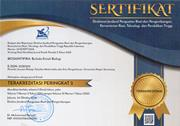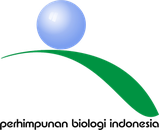Application of Bio P60 and Bio T10 in Combination Against Phytophthora Wilt of Papaya
(1) Faculty of Agriculture, Universitas Jenderal Soedirman
(2) Faculty of Agriculture, Universitas Jenderal Soedirman
(3) Faculty of Agriculture, Universitas Jenderal Soedirman
Abstract
Papaya is one of the most widely cultivated horticultural plants. Phytophthora wilt is an important papaya disease which results in production losses. This research aimed to determine the effect of Bio P60 (raw secondary metabolites of Pseudomonas fluorescens P60) and Bio T10 (raw secondary metabolites of Trichoderma harzianum T10) application in combination on Phytophthora wilt and on growth of pepaya. The research was conducted on Californian pepaya farm, Linggasari Village, Kembaran District, Banyumas Regency. Randomized block design was used with six replicates and five treatments consisted of control (Mancozeb 80%), Bio T10 flush + Bio T10 spray, Bio T10 flush + Bio P60 spray, Bio P60 flush + Bio T10 spray, and Bio P60 flush + Bio P60 spray. Variables observed were percentage of healthy leaves, infection rate, number of healthy leaves, and number of healthy pepaya fruit. Result of the research showed that application of Bio P60 and Bio T10 effectively cured Phytophthora wilt with the percentage of healthy leaves as 69.19% compared to control. The combination was able to increase the number of healthy leaves the number of healthy papaya fruit. The novelty of this research is that raw secondary metabolites of biological agents proven to be able to overcome the papaya diseases, which so far cannot be solved. The implication for the development of science is one step ahead in overcoming plant diseases biologically by utilizing raw secondary metabolites. The benefits for the community can overcome papaya plant diseases organically, safely, and environmentally friendly, and inexpensive.
Keywords
Full Text:
PDFRefbacks
- There are currently no refbacks.

This work is licensed under a Creative Commons Attribution 4.0 International License.



